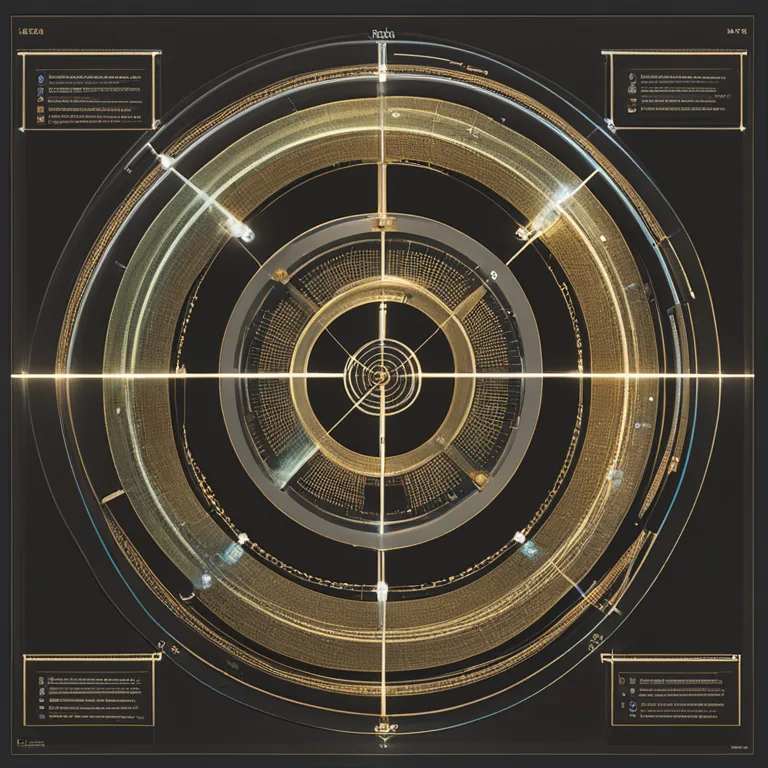
Demystifying Biorhythms: How They Influence Your Life
Delve into the workings of biorhythms and the profound impact they may have on daily life, offering an intriguing blend of science and self-awareness.
article by Adrian Wallace
Introduction to Biorhythms
Biorhythms are a complex yet fascinating concept believed to predict various aspects of an individual's life through rhythmic cycles. Originating in the 19th century, the theory has evolved, suggesting our physical, emotional, and intellectual abilities are governed by biological cycles. These cycles are thought to start at birth and oscillate between high and low phases throughout one's life. This introductory glimpse into biorhythms lays the foundation for understanding their potential influence on daily activities and well-being.

Physical Cycle: The Body's Ebb and Flow
The physical cycle, typically lasting 23 days, pertains to one's physical strength, endurance, and overall vitality. During the high phase of this cycle, individuals may feel energetic and full of vigor, while the low phase can lead to feelings of physical exhaustion and a potential decrease in coordination. Those who track their physical biorhythm may choose to engage in strenuous activities when their cycle predicts peak physical condition.

Emotional Cycle: Riding the Waves of Feelings
Spanning 28 days, the emotional cycle influences mood, creativity, and psychological well-being. The highs of this cycle are often characterized by optimism and a positive outlook, while during the lows, one might experience emotional instability or a sense of melancholy. Monitoring this cycle could provide insights into the optimal timing for activities that require emotional investment or social interaction.

Intellectual Cycle: The Mind's Tides
The intellectual cycle, with a 33-day duration, affects cognitive functions such as analysis, decision-making, and memory. A high phase might bring enhanced clarity of thought and problem-solving abilities, whereas during a low phase, mental acuity might wane, making complex tasks more challenging. Professionals and students alike might find it beneficial to align tasks requiring intellectual rigor with the peak periods of this cycle.

The Significance of Critical Days
Critical days occur when a biorhythm cycle crosses the zero line, shifting from positive to negative or vice versa. On these days, one may feel unsettled or out-of-sync, as the body adjusts to the transition. These are traditionally viewed as times for caution, particularly when a decision or action might have significant consequences. Followers of biorhythms often use caution or delay important activities during these transitional periods.
Tracking and Predicting with Biorhythms
With the advent of technology, tracking one's biorhythms has become more accessible. A myriad of apps and online calculators now exist, allowing individuals to input their birthdates and receive personalized biorhythm charts. This digital evolution has led to a resurgence in the interest around biorhythms, with many finding this data integration helpful in planning and foreseeing potential challenges or opportunities.
Biorhythms in the Modern World
In today's fast-paced society, the concept of biorhythms provides a unique tool to align personal cycles with everyday demands. While the scientific community remains skeptical about its empirical validity, biorhythms continue to capture the imagination of many who are seeking alternative methods to improve their quality of life and harness their potential on favorable days.
Published: 12/28/2023
Modified: 12/28/2023
More predictions
Come back here soon to learn more about yourself and your future


Exploring Human Biorhythmic Cycles
Explore the fascinating concept of biorhythms and their influence on physical, emotional, and intellectual faculties in humans.


The Reality Of Biorhythm Compatibility
Unravel the truth behind biorhythm compatibility and its role in personal relationships and daily life.


Unlocking Your Body's Natural Clock
Explore the intriguing world of biorhythms and discover how they influence your physical, emotional, and intellectual states.